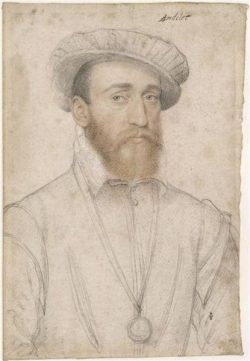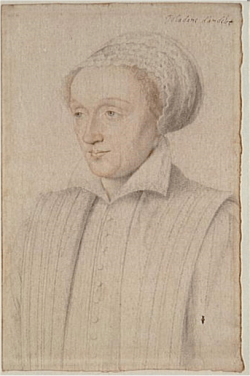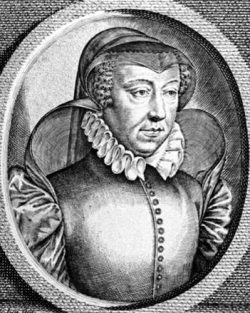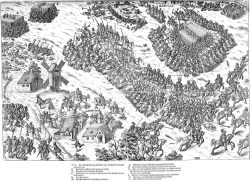François d’Andelot (1521-1569)
François d’Andelot (1521-1569) was the youngest of the three Coligny brothers, but he was the first to convert to Calvinism. The publicity given by his spiritual commitment almost cost him his life and committed him to more discretion. He played a major role in the Huguenot military actions ed by his brother , Admiral de Coligny, and the Prince of Condé.
The first convert
François d’Andelot was the first Coligny to convert to Calvinism in the mid 1550s. He had been a captive of the Spaniards since 1551, and imprisoned in Milan. During his incarceration he read the Bible and probably some of Calvin’s works. He was freed in 1556 and publicly displayed his new faith in 1558, organising many public preaches on the way from Paris to his estate in Brittany. His commitment caused him to be imprisoned b y order of Henri II and was almost burnt at the stake. Prompted to moderation by his wife, Claude de Rieux and his brother Cardinal of Châtillon, he finally accepted to hear a mass, which incurred Calvin’s wrath.
This sad episode deeply influenced Gaspard de Coligny who was also converted while being held at the castle in Gand from 1557 to 1559. When freed he assumed confidentiality and reserve, the exact opposite of the publicity then sought by Andelot.
The impetuous
The youngest of the Coligny brothers did not share his elder brothers’ calm, temperance and moderation. He was sanguine and impetuous, accused of killing a German captain in his youth, or of ordering captain Charry’s killing in 1563. According to François de la Noue’s account, Andelot played a key role in the outbreak of the second war of religion in 1567.
Confronted by multiple breaches of the edict and fearing that Catherine de Medici had sworn an alliance with deeply Catholic Spain at the Bayonne meeting in 1565, the Reformed leaders met several times during the Summer of 1567. Contrary to his brother Admiral of Coligny who advocated delay, Andelot refused to bear the violence of the Catholics any further and called to take up arms. Being more eloquent and impetuous than his brother he was given full approval by the assembly of noble swordsmen.
The misfortune of arms
The military qualities of François d’Andelot were acknowledged by almost all his contemporaries, even by the Duke of Guise who considered him ‘the best man’ in the Huguenot army. As Colonel-General of the French infantry he played a key role in the military operations during the first three Wars of Religion.
As the first civil war broke out in 1562 he was sent to Germany to raise troops. When he came back in November he was weakened by a fever which did not abate before the peace of Amboise was signed in March 1563 – he could only take part for a few minutes in the battle of Dreux in December 1562 between two bouts of fever. He supervised the taking of Orléans in April 1562 and assumed its defense against the Royal troops under François de Guise’s command in 1563.
Four years later, in 1567, Prince of Condé sent him with part of the troops to take the city of Poissy while the rest fought against the Royal forces in Saint-Denis. In 1568 he ensured that the Protestant armies safely crossed the River Loire. On 13 March 1569 in Jarnac his role was masked by the death of the Prince of Condé.
In Saintes, on 27 May 1569 he died after a final bout of fever, he was 48 years old.




